
Projekt: Lost Childhood
Jewish Children from
Goch and Uedem
The aim of or project “Lost Childhood” is to draw attention to the fate of Jewish children and young people from Goch and Uedem during the period of National Socialism.
What makes childhood precious?
To live in the loving-care and protection of a family, to develop one’s personality freely, to enjoy the company and be able to have friends of one’s choice, to be able to attend school, to have sufficient to eat and drink, to be protected from psychological and physical abuse, to be involved in decisions, are only some of many aspects which might be stated. These basic rights of children are nowadays statutory in various German Federal State laws as well as UN Charters. That was not always so!
Children denied rights, opportunities and a future
None of the aforementioned aspects of a happy and valued
childhood applied to Jewish children during the National Socialist
period. Many Jewish children could not live in the protection of their
families. They were either, like Leni Valk, sent abroad, or they were,
together with their parents, deported to concentration-camps and
subsequently murdered .
From 1938 onwards, Jewish children were no longer allowed to attend
state schools. Trade apprenticeships were no longer permitted – and
higher university education was also banned for them .
Any right to enjoying the company, or having friends of one’s choice
was already limited in 1933. By the end of the 1930’s the total
isolation of Jewish inhabitants had been attained. Spurred on by their
families, school policies and the Hitler Youth or BDM many non-Jewish
children wished no contact with Jewish children. One anti-semitic
mother succeeded in having Leni Valk expelled from kindergarten. In
1934 the local N.S. Party leader Herr Salzmann succeeded in having
schoolgirl Ellen Hoffmann banned from taking part in any public school
events. Membership of clubs (e.g sports etc) was no longer possible.
Possibilities for public life or freedom of play were steadily
vanishing. Jewish children were not permitted to visit swimming baths,
cinemas, playgrounds, or public parks. Everywhere signs were to be seen
reading “Forbidden for Jews”. Finally open isolation was reached by the
compulsory wearing of the yellow “Judenstern” which resembled a
blocked-in six-pointed Star of David. One can hardly imagine how
frightening it must have been for Jewish children to wear such a sign
of exclusion, whilst walking the gutters, for using the sidewalks was
also forbidden in the 1940’s .
Threats and violence increased after 1938. During the “Kristallnacht”
of 9th November 1938 the Goch Synagogue was burned down by arson. Most
of the Jewish owned shops were wrecked and plundered as well as private
apartments and houses, which were searched and vandalised. The
descriptions provided by Margot Cohen, then only six, make clear
the fear which she suffered at such tender age. Further to this her
father, as was also Leni Valk’s father imprisoned, without charges –
for a day, or (Mr. Valk) interned in the Dachau concentration camp .
Fear of the ever-present threat of violence, imprisonment, deportation
and murder played an increasing part in their lives. Children who had
been sent by their parents to the Netherlands, had to survive without
their parents, with relatives (Leni Valk, Rolf Peter Stern) or with
foster-parents / in orphanages (Margot, Herbert and Gabriel Cohen,
Joseph Seligmann). Herbert and Gabriel Cohen lived at various addresses
in Amsterdam 1942/43 and so attempted being caught in the German
“Razzias” (Germany had invaded and occupied the Netherlands in 1940)
Sometimes they could only stay at the addresses at night – and had to
spend the daylight hours on the street. From 1941 from Germany, from
1942 from the Netherlands, the deportations to ghettoes and
concentration camps in the east commenced. Each person could take one
packed suitcase, plus food only for the journey and a maximum of 50
Reichsmarks with them. All other possessions had to be left behind.
Edith Devries from Weeze, sent to Theresienstadt in Czechoslovakia aged
only four – recalls even now how she had wanted to take her doll.
Neither she nor Margot Cohen were able to do so, as there was no space
in their small suitcases for toys .
Of the 20 Jewish children and teenagers from Goch and Uedem, 11 were
murdered in concentration camps. The others survived by various strokes
of fate; by timely emigration (to the USA: Eva and Leah Willner, to
Argentina: Werner Cohen, Heinz Sternefeld) or by being hidden in the
Netherlands (Lore and Rosemarie Kann, Margot Cohen). Joseph Seligmann
fought with Belgain and Dutch resistance movements and ended the war as
a soldier in the Dutch Army .
Those children and young people who did not lose their lives did
however lose members if not all of their families. As per their ages
they had seldom or never attended school. They had lived with
relatives- hardly known before or with total strangers. For reasons of
poor education and lack of finance they were later to find it difficult
or impossible to be employed as they would have wished. The
grandchildren of Heinz Sternefeld – whose family had been very wealthy
– reported that after his arrival in Argentina and during his
subsequent life there he had to take many low-paid and unqualified jobs
– which caused him unhappiness for the rest of his life.
Never forget!
On this website we wish to present the fates of Jewish children from Goch and Uedem. In this manner we intend to honour them and ensure they are not forgotten .
Thanks to
Pupils of Class 10 / Information Technology course – for your interest
and involvement in research and website design .
For freely providing photographs and information a special thanks to :
- Dr. Micha Ofir, Leahand Daniel Cohen for
Informationen and pictures about family Oppenheimer / Willner
/Seiligmann
- Hans-Joachim Koepp, town archivist
- Johannes Nolte (Former Head of "Geschwister-Devries-School"
- Uedem
- Miriam Mijatovich Keesing a picture showing Herbert Cohen and documents about Gabriel Cohen <nd Leni Valk
- Carla Machado for pictures and information about her grandfather Heinz Sternefeld
- the Jewish Historical Museum for pictures about the Refugee Home Soesterberg
- Nicolette Ista and Frank Duveen for pictures and information about family Koppel/Kann
- Ursula Ultermann for information and pictures about family Hoffmann, Brünell
- Robin Devries for his father´s photos of Goch s, Karin
Schimmelpfennig for information about Rolf-Peter Stern
- and many others, who provided Material and supported us.
Goch, 20th of May 2015
Ruth Warrener
| Startseite jüd. Kinder |
| Projektinfo |
| Karte |
| Liste |
| Links |
| Impressum |
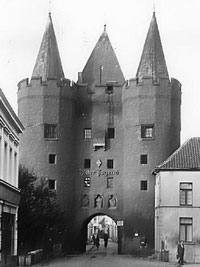 |
|
Stonegate Goch |
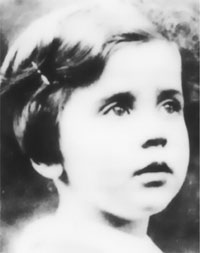
|
|
Leni
Valk |
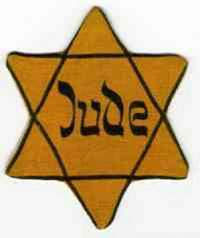 |
|
"Jewish Star" |
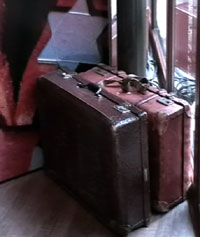 |
|
A suitcase containing everything? |
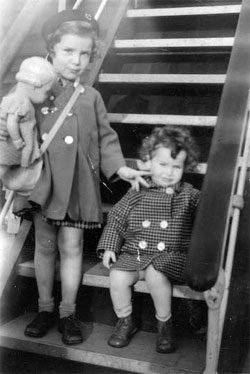
|
|
Leah
und Eva on a ship leaving for New York 1938 |
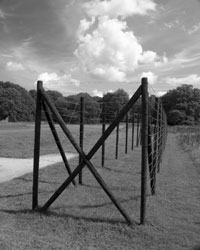 |
|
Fence in the transition Camp
Westerbork |